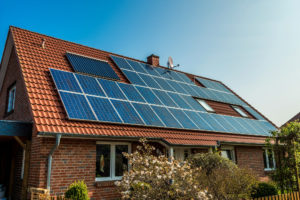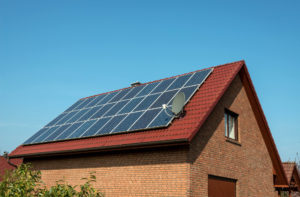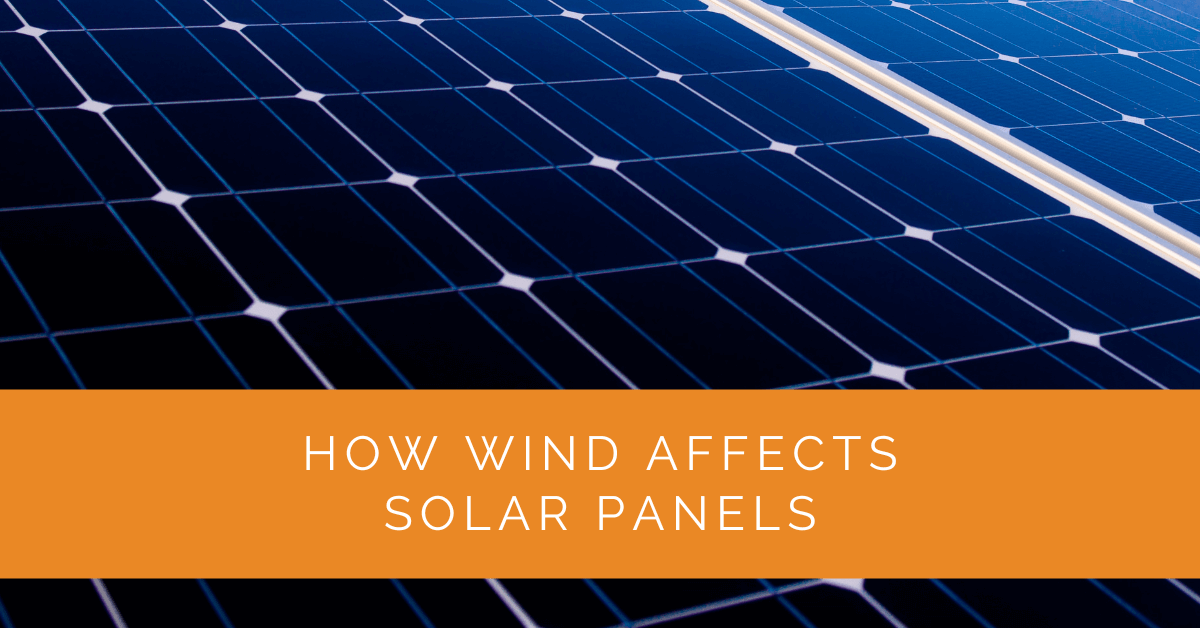Solar panels have become increasingly popular as a reliable source of renewable energy. However, it is essential to understand how wind can impact their performance and durability. In this article, we will delve into the intricate relationship between wind and solar panels, exploring their ability to withstand different wind speeds, the impact of hurricanes, and the significance of proper installation techniques.
Contents
Key Takeaways
- Understanding solar panels’ wind speed thresholds and limits is crucial for ensuring their long-term functionality and durability.
- Proper preparation and reinforcement are necessary to protect solar panels from the destructive forces of hurricanes and high wind speeds.
- Investing in professional installation techniques, including quality mounting systems, can significantly enhance the wind resistance of solar panel systems and maximize their performance and longevity.
Wind Speed and Solar Panel Survival
Factors Affecting Wind Resistance
Several factors influence the wind resistance of solar panels, ultimately determining their ability to survive in high wind conditions. These factors include:
- Panel Design: Solar panels with robust frames, reinforced glass, and sturdy connections are better equipped to withstand strong winds. Design features like aerodynamic profiles and wind deflectors can also help minimize wind resistance.
- Installation Quality: Proper installation techniques are crucial for ensuring wind resistance. This includes secure mounting systems, correct sealing, and adherence to industry best practices. Installers should consider wind load calculations specific to the location and reinforce the mounting structure accordingly.
- Location: The geographical location of the solar panel system plays a significant role in wind resistance. Areas prone to high wind speeds or extreme weather conditions require additional precautions and specific wind-resistant design considerations.
Wind Speed Thresholds and Ratings
Solar panels are designed to withstand specific wind speed thresholds, typically 90 to 120 mph. These thresholds represent the maximum wind speeds the panels can operate safely without sustaining significant damage or compromising their structural integrity.
It is essential to consult the manufacturer’s specifications and choose solar panels with appropriate wind ratings suitable for the specific installation location. Wind ratings provided by manufacturers indicate the wind speed limits the panels can endure while maintaining their functionality.
Wind Load Calculations
Solar installers perform wind load calculations specific to the location and factors such as panel tilt, height above ground, and local wind speed data to ensure proper installation and wind resistance. These calculations help determine the appropriate anchoring methods and mounting structures to withstand the anticipated wind forces.
By considering these factors and adhering to wind load calculations, solar panel systems can be designed and installed to withstand expected wind speeds, minimizing the risk of damage and optimizing their longevity.

Hurricanes and Solar Power Systems
Wind Hazards in Hurricanes
Hurricanes pose unique challenges to solar power systems due to their exceptionally high wind speeds. These intense storms can generate winds exceeding 150 mph, which can cause severe damage to solar installations if not adequately prepared.
Reinforcing Mounting Structures
During hurricane events, reinforcing the mounting structures of solar panel systems is crucial. This involves ensuring the attachments are robust, secure, and capable of withstanding the extreme wind forces exerted during the storm. Reinforcements may include additional fasteners, bracing, or redesigning the mounting system for increased stability.
Utilizing Hurricane-Rated Solar Panels
It is advisable to use hurricane-rated solar panels specifically designed and tested to withstand the intense wind forces associated with these storms in hurricane-prone areas. These panels are constructed with reinforced frames, impact-resistant glass, and enhanced durability features to provide additional protection against hurricane winds.
Wind Diversion and Barriers
Installing windbreaks or barriers around the perimeter of the rooftop solar array can help divert wind and reduce the direct force on the panels. These barriers can be structural elements, such as fences or walls, strategically positioned to create wind-resistant zones around the solar array. By reducing the direct impact of wind, the barriers help safeguard the panels and minimize the risk of damage.
Advanced Mounting Systems
Utilizing advanced mounting systems designed specifically for high wind resistance is crucial in hurricane-prone regions. These systems offer superior strength, flexibility, and adaptability to effectively absorb and distribute wind forces. Advanced mounting systems can allow the panels to move slightly with the wind, reducing stress on the system and minimizing the risk of damage.

Ensuring Wind Resistant Solar Panel Installations
Rooftop Assessment
Before installing solar panels, a thorough assessment of the rooftop’s structural integrity is essential. This evaluation ensures that the rooftop can support the weight of the solar panels and withstand the wind load anticipated in the area. In some cases, reinforcements may be necessary to enhance the stability and safety of the solar array.
High-Quality Mounting Systems
Selecting high-quality mounting systems specifically designed for wind resistance is critical. These mounting systems provide secure attachment points for the panels and ensure they remain firmly anchored even under strong wind forces. Components such as strong brackets, stainless steel fasteners, and reinforced clamps contribute to the solar panel system’s overall stability and wind resistance.
Expert Installation Techniques
Proper installation techniques are essential for ensuring wind resistance. Certified solar installers follow industry best practices, including proper panel placement, secure wiring, and correct sealing. They also consider the wind load calculations specific to the installation location and ensure that all components are correctly installed to withstand anticipated wind forces.
Regular Maintenance and Inspection
Regular maintenance and inspection by professionals are crucial for identifying any signs of wear, damage, or loose connections. Timely repairs and maintenance help maintain the wind resistance of the solar panel system and ensure its optimal performance over its lifespan. Regular inspections should include checking the integrity of mounting structures, examining panel connections, and assessing the system’s overall condition.
By considering these factors and working with experienced solar installers, individuals can ensure that their solar panel system is properly designed, installed, and maintained for optimal wind resistance. This approach maximizes the system’s ability to withstand high winds, mitigates the risk of damage, and ensures long-term energy generation from renewable sources.
Experience Solar Excellence with Us!
Trust in Solar Panels Network USA, where our seasoned experts deliver top-quality solar solutions for homes and businesses nationwide. With a legacy of countless successful installations and a commitment to sustainable energy, we’re your reliable partner in the solar journey. Ready for a brighter, eco-friendly future? Call us now at (855) 427-0058 and harness the power of the sun!
Conclusion
Understanding the relationship between wind and solar panels is crucial for maximizing their performance and durability. Properly designed and installed solar panel systems can withstand various wind speeds, including those associated with hurricanes, through factors such as panel design, quality installation techniques, and wind load calculations. To ensure wind-resistant solar panel installations, thorough rooftop assessments, high-quality mounting systems, expert installation techniques, and regular maintenance are essential. By adhering to these principles, individuals can confidently harness renewable energy, even in regions prone to high winds, ensuring long-term sustainability and energy generation.
FAQ
Does wind affect solar panels?
Yes, wind can affect solar panels. It is important to consider the impact of wind on their performance, durability, and structural integrity.
How much wind can a solar panel withstand?
The wind resistance of solar panels can vary depending on factors such as design, installation quality, and location. Typically, solar panels are engineered to withstand wind speeds ranging from 90 to 120 miles per hour (mph). However, it is essential to check the wind rating provided by the manufacturer for specific panels.
How do you protect solar panels from wind?
To protect solar panels from wind, proper installation techniques are crucial. This includes assessing the rooftop’s structural integrity, utilizing high-quality mounting systems, and following industry best practices for secure panel placement and wiring. Regular maintenance and inspections also help identify any signs of wear or damage.
Can solar panels withstand hurricane winds?
Solar panels face significant challenges during hurricanes due to extremely high wind speeds. While solar panels are designed to withstand certain wind speeds, hurricanes with wind speeds exceeding 150 mph can potentially cause damage. Implementing additional measures, such as reinforcing mounting structures and utilizing hurricane-rated solar panels, can help enhance their resilience in hurricane-prone areas.
About the Author
Solar Panels Network USA stands at the forefront of solar energy solutions, driven by a team of seasoned solar engineers and energy consultants. With over decades of experience in delivering high-quality solar installations and maintenance, we are committed to promoting sustainable energy through customer-centric, tailored solutions. Our articles reflect this commitment, crafted collaboratively by experts to provide accurate, up-to-date insights into solar technology, ensuring our readers are well-informed and empowered in their solar energy decisions.

